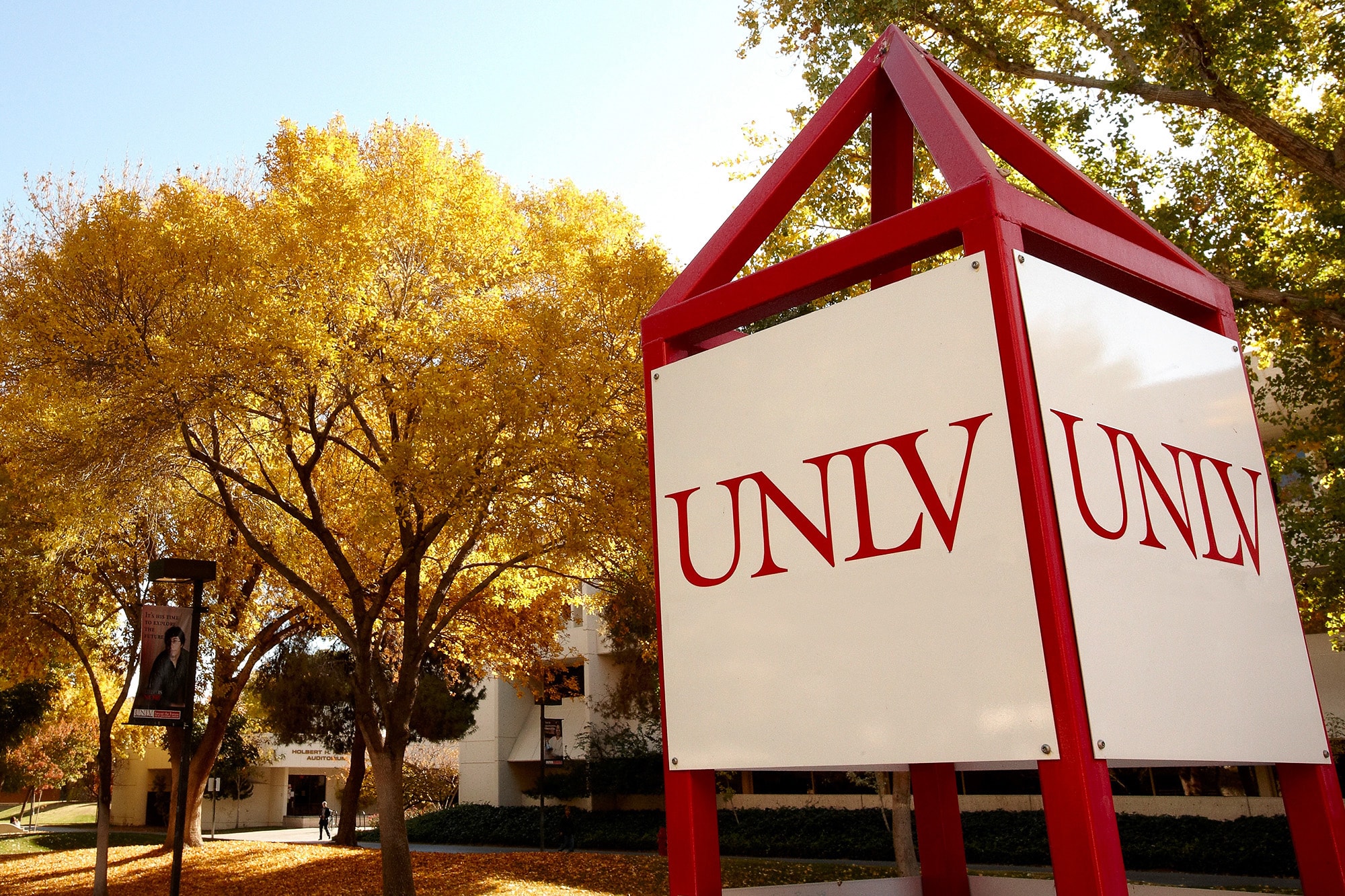IT DOESN'T TAKE A GROUP OF ROCKET SCIENTISTS to realize we're in the midst of an energy crisis. One trip to the gas pump or one glance at your summer power bill is proof enough. It does, however, take a group of rocket scientists -- or something close to it -- to develop technology to combat that crisis.
A collection of UNLV professors, students, and researchers has been working for nearly three years -- courtesy of a U.S. Department of Energy grant totaling nearly $1 million -- on two energy-saving projects with applications for Southern Nevada and beyond.
The first is a new twist on light-emitting diode (LED) technology, which brightens marquees from the south end of the Las Vegas Strip to the world's largest LED display, the Fremont Street Experience. The second project involves converting direct sunlight into high-intensity solar power for use in outdoor displays.
The prototypes for both inventions sit inside a laboratory on the second floor of the Thomas T. Beam Engineering Complex and look primitive at best. But as engineering professor Rama Venkat and his team proudly show off their gadgets, even a layman who needs directions to screw in a light bulb can deduce that these inventions could have a tangible impact on our environs.
Saving Energy Without Compromising Quality
Unlike their private-sector counterparts, professors are free from the constraint of worrying about the immediate commercial needs of a client or the market, says Venkat, who has been a professor at UNLV for 19 years. "But these projects are different because they're so strongly tied to the market and so appropriate. Energy is a big issue and the environment is a big issue; our projects address those two issues clearly."
Dubbed "Photonics in Entertainment," the project got off the ground when U.S. Sen. Harry Reid paired the DOE with UNLV's engineering department nearly three years ago. The federal grant UNLV received in fall 2005 sought more energy-efficient and cost-effective alternatives to the LED displays fronting the state's hotel-casinos.
Traditional LEDs use red, green, and blue diodes to light up all the colors in a display. Venkat and his team -- which includes research engineer Glenn Mercier, research associate Paolo Ginobbi, and students Neveen Shlayan and Mike Thorton -- determined that adding a white LED to the red-green-blue configuration would significantly decrease the energy needed to power up the signs. It turns out that a white LED is much more energy efficient than the three other colors -- in fact, as much as 50 percent more efficient than a green LED. By supplementing with a white LED, energy can be saved without compromising the color quality of the sign.
Venkat says the LED project is about 80 percent complete; it will be finished this coming year, thanks to an additional $600,000 federal grant.
Another project with strong market appeal is what Venkat calls his "sunlight display." This inexpensive and environmentally friendly contraption uses concentrated direct sunlight -- rather than electricity -- to power highly luminous outdoor signs during daytime hours (and potentially at night).
Ideally, Venkat says, this technology would be used on remote desert highways (where the cost of establishing electricity is substantial) and on urban freeways. The displays can be controlled from hundreds of miles away to broadcast traffic and Amber alerts. During the summer months, when electricity demands in the desert are at their peak, the signs would save a significant amount of energy, Venkat says.
Getting to Market
The next step, albeit a big one, is to transfer the technologies from Venkat's lab to the real world. Venkat has begun working with the international sign maker Tecnovision on plans to manufacture and market the LED technology. At the same time, the university is working to secure patents on both projects. That's a time-consuming task that few professors have the resources (or the desire) to tackle. So in steps UNLV's office of technology transfer.
"The university obviously isn't in the business of making the products," says Robert Sweitzer, director of the office. "So (our office) works with companies -- and ideally Southern Nevada companies -- that could make use of UNLV's research to introduce new products and services. This will bring licensing royalties to the university and positive economic impact to the community from the direct sale of the product and from job growth. The more a product sells, the more jobs that are created."
Sweitzer noted that the LED and sign technology is likely to generate high interest. "Ultimately, the market determines if there is a little bit of interest or a phenomenal amount. Having said that, though, anything that addresses the issue of increasing energy costs holds great promise."



